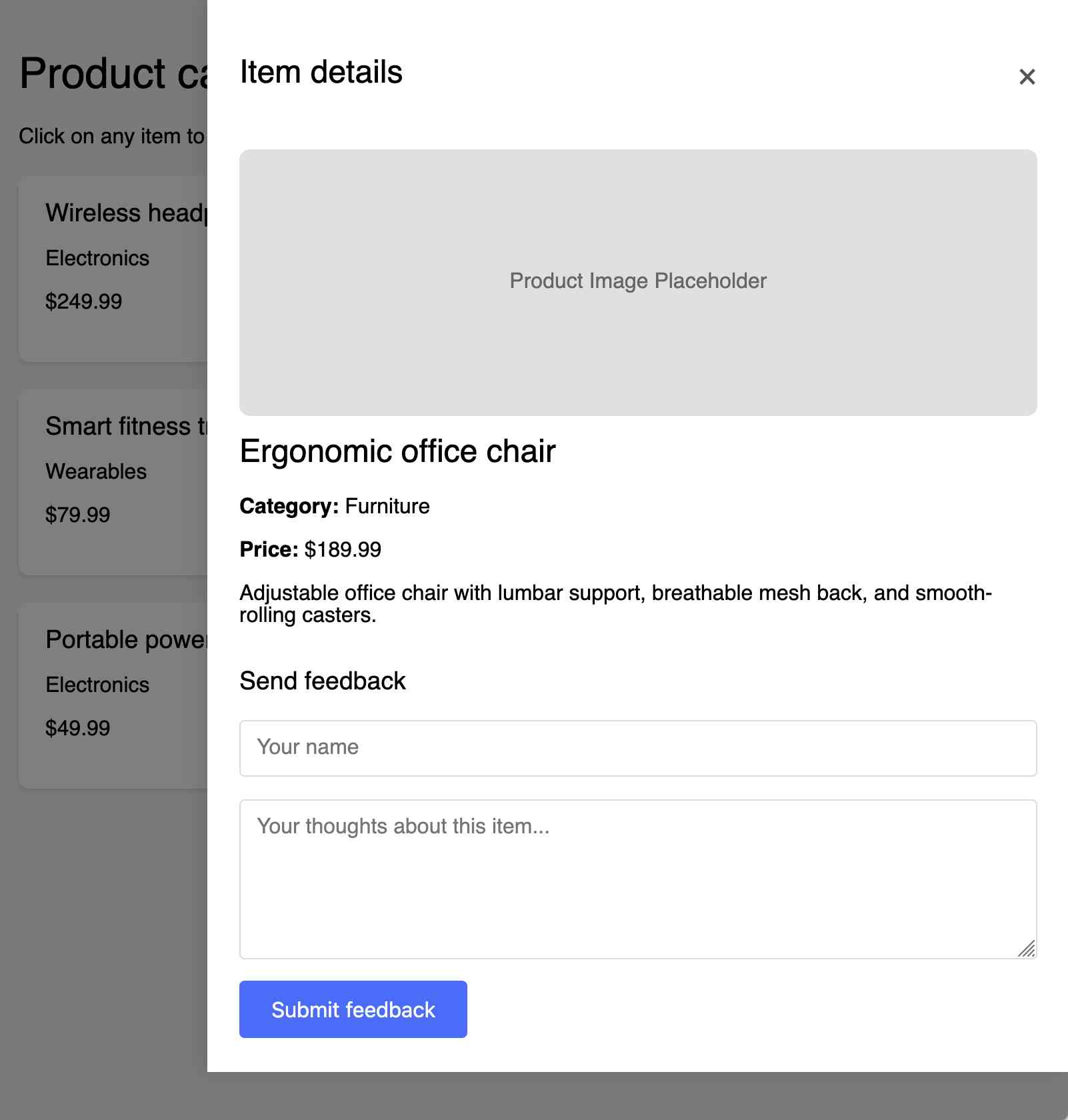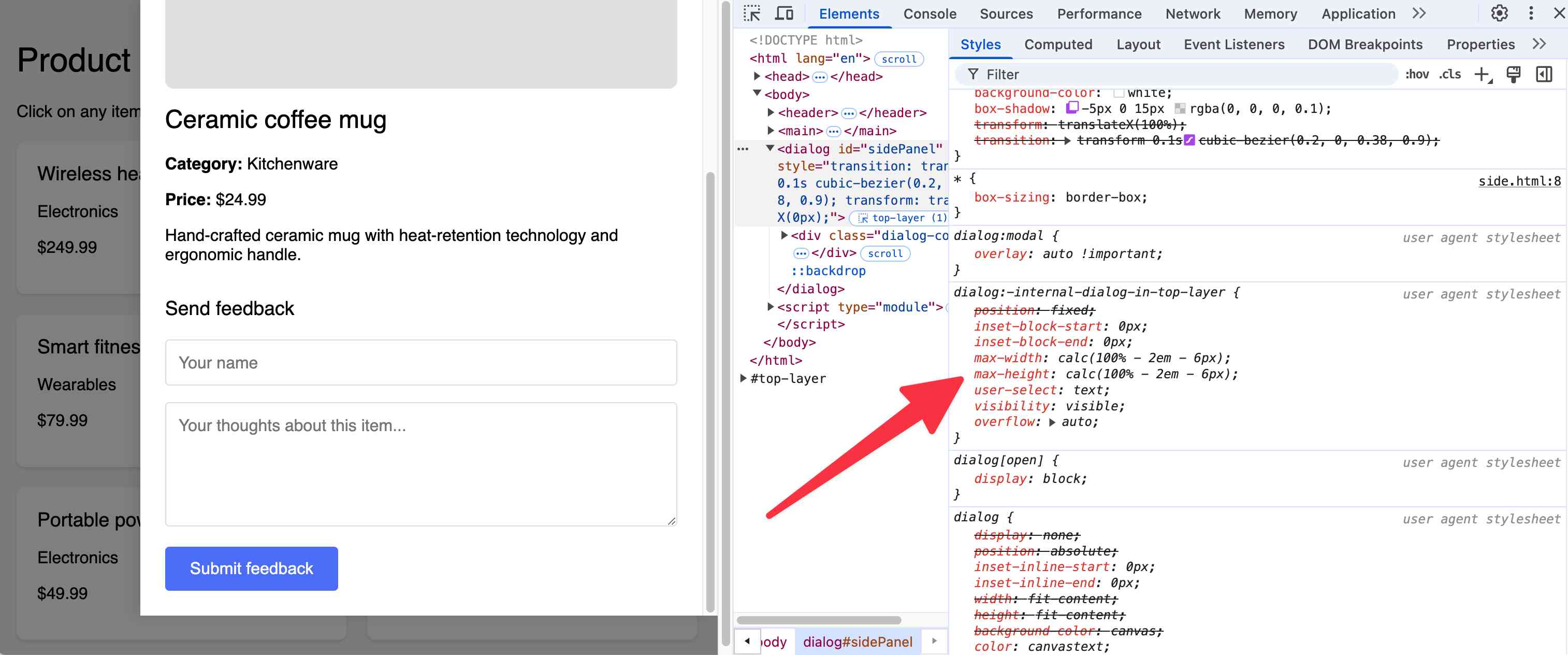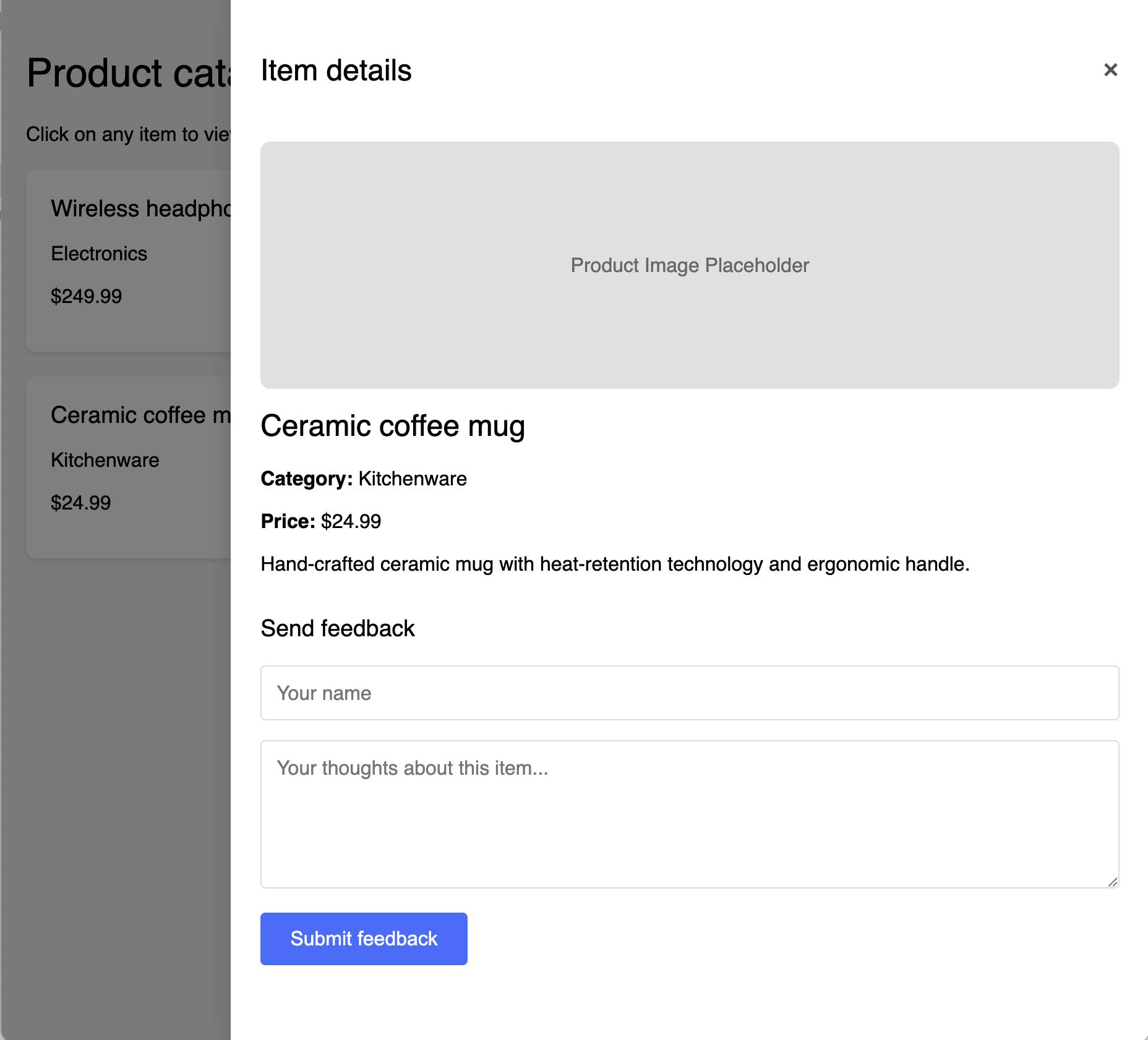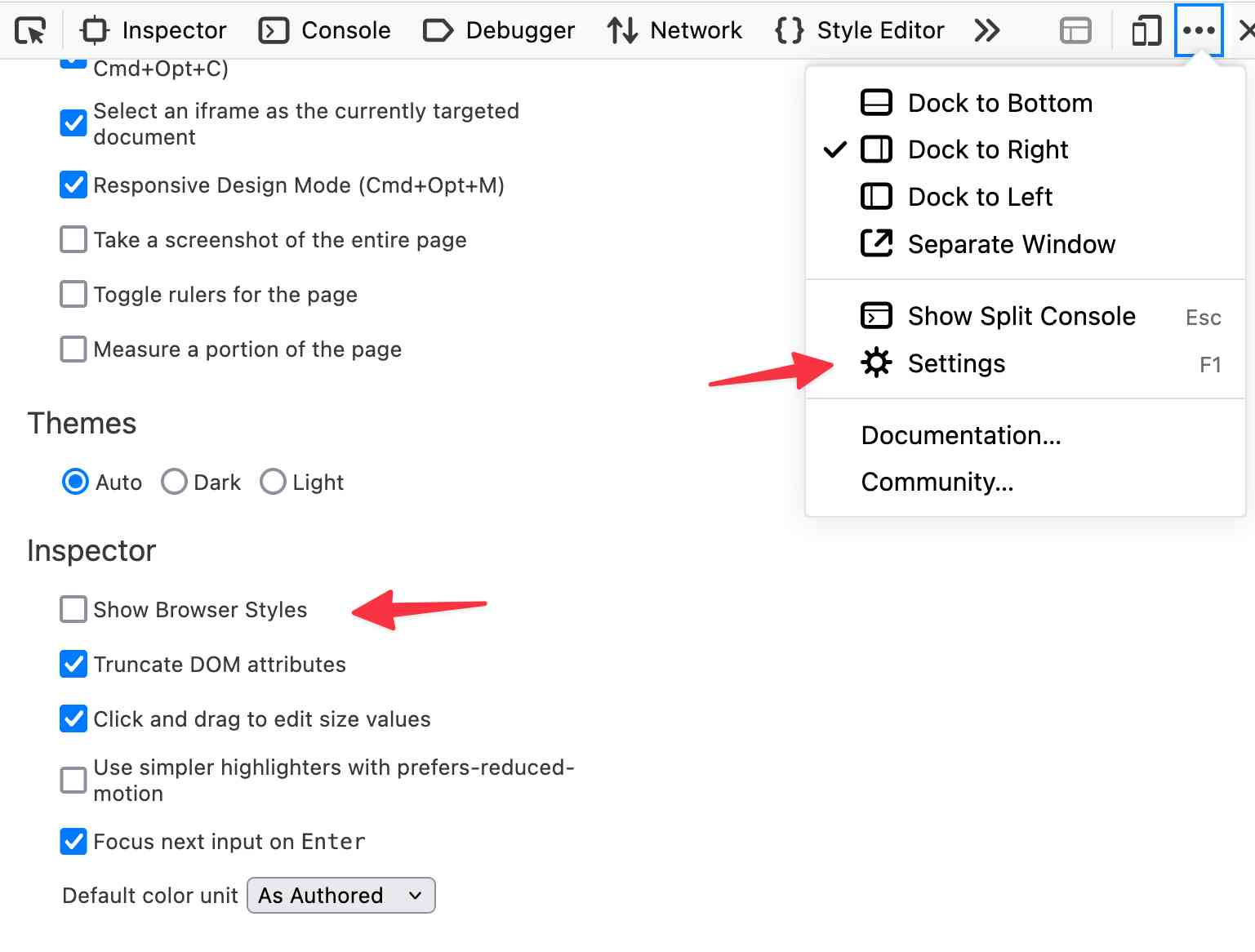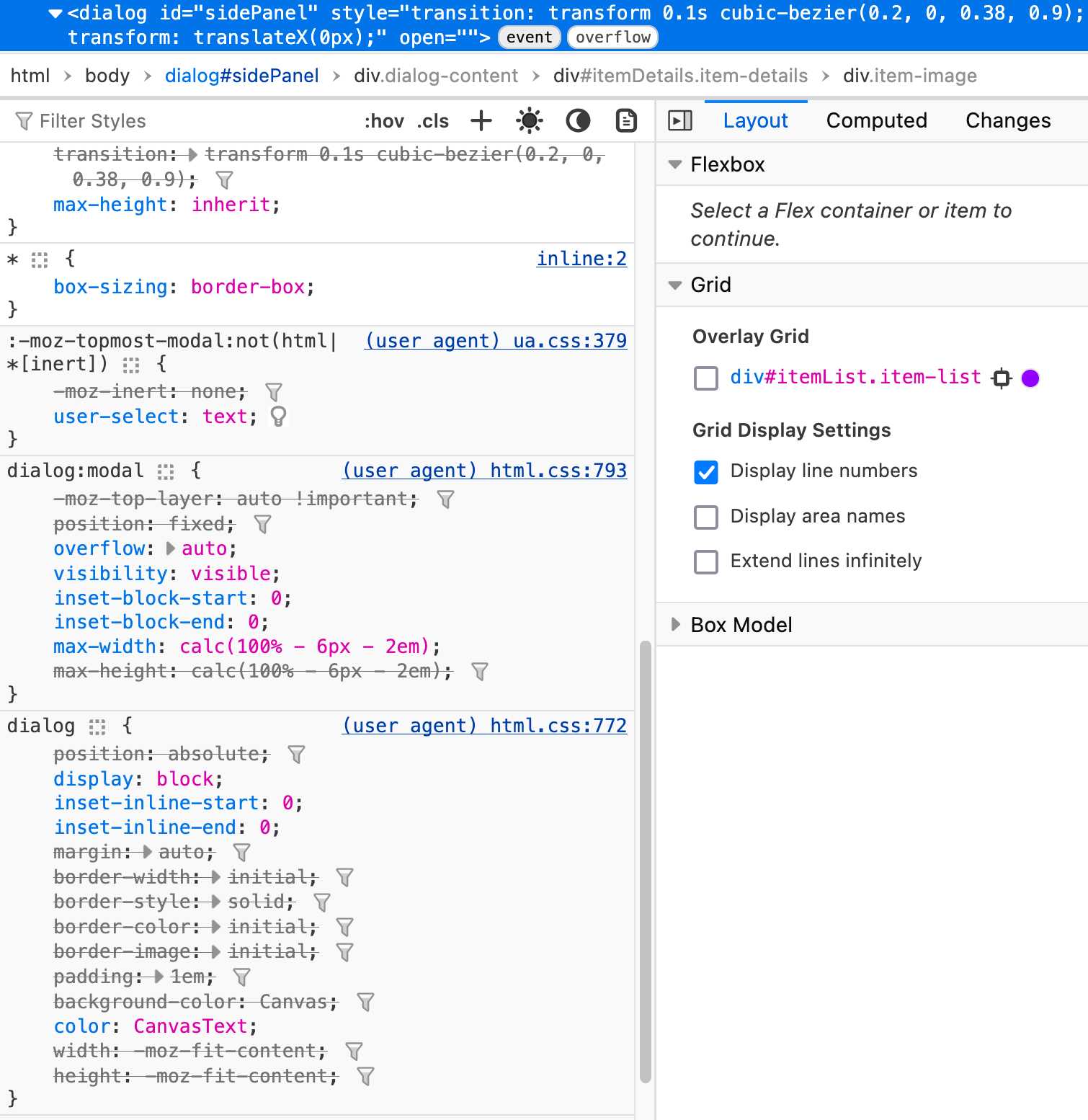Styling an HTML dialog modal to take the full height of the viewport
I've been experimenting with the HTML dialog element recently, for example in my Prompts.js JavaScript library.
Today I got Claude to build me an experiment to use it for a side panel that would slide in from the right hand side of the screen, looking like this:
But what's with that gap at the bottom? I want the side panel to take up the full height of the screen.
The CSS looked good to me:
dialog {
position: fixed;
margin: 0;
padding: 0;
border: none;
width: 80%;
height: 100vh;
top: 0;
right: 0;
left: auto;
background-color: white;
box-shadow: -5px 0 15px rgba(0, 0, 0, 0.1);
transform: translateX(100%);
transition: transform 0.1s cubic-bezier(0.2, 0, 0.38, 0.9);
}Where was that gap coming from?
Firefox DevTools didn't answer my question, so I tried poking at Claude, then ChatGPT, and by the time I was screen sharing with Gemini 2.0 Flash and arguing out loud with it about the CSS Natalie overheard and took pity on me and stepped in to help.
Her suspicion was that this had something to do with the <dialog> element. I got Claude 3.7 Sonnet to rewrite the code to use a div instead of a dialog and the mysterious gap vanished, which was a strong hint that she was right.
I was using Firefox. Natalie pointed out that Chrome DevTools display default browser styles for elements, so we switched to that and...
Chrome was applying these default styles, including one for max-height:
dialog:-internal-dialog-in-top-layer {
position: fixed;
inset-block-start: 0px;
inset-block-end: 0px;
max-width: calc(100% - 2em - 6px);
max-height: calc(100% - 2em - 6px);
user-select: text;
visibility: visible;
overflow: auto;
}The mysterious gap was entirely explained by that max-height: calc(100% - 2em - 6px); rule.
Adding max-height: none to my CSS (or max-height: 100vh) fixed the bug!
You can try that out here.
I was curious if this was expected behavior, so I dug around a bit and found it in the HTML specification here:
... dialog:modal { position: fixed; overflow: auto; inset-block: 0; max-width: calc(100% - 6px - 2em); max-height: calc(100% - 6px - 2em); }
The spec lives in GitHub in a 7MB source file which is too large to view through the GitHub web interface, so I ran this:
cd /tmp
git clone git@github.com:whatwg/html
cd html
git blame source | rg 'max-height:' -C 30It took a while to run:
Blaming lines: 53% (79074/148234)
Which revealed the relevant commit:
075834570 (Tim Nguyen 2023-06-06 21:45:41 -0700 136481) dialog:modal {
075834570 (Tim Nguyen 2023-06-06 21:45:41 -0700 136482) position: fixed;
075834570 (Tim Nguyen 2023-06-06 21:45:41 -0700 136483) overflow: auto;
075834570 (Tim Nguyen 2023-06-06 21:45:41 -0700 136484) inset-block: 0;
075834570 (Tim Nguyen 2023-06-06 21:45:41 -0700 136485) max-width: calc(100% - 6px - 2em);
075834570 (Tim Nguyen 2023-06-06 21:45:41 -0700 136486) max-height: calc(100% - 6px - 2em);
075834570 (Tim Nguyen 2023-06-06 21:45:41 -0700 136487) }
075834570 moved that text but didn't introduce it, so I ran the same thing against the parent tree:
git checkout af3ff8382c74f7dc9a98dcdd49a24d96bfc75f26
git blame source | rg '100% - 6px' -C 30And found this:
979af1532 (Ian Kilpatrick 2020-11-03 10:26:48 -0800 124234) <ul>
979af1532 (Ian Kilpatrick 2020-11-03 10:26:48 -0800 124235) <li><span>'position'</span> property to 'fixed'</li>
979af1532 (Ian Kilpatrick 2020-11-03 10:26:48 -0800 124236) <li><span>'overflow'</span> property to 'auto'</li>
979af1532 (Ian Kilpatrick 2020-11-03 10:26:48 -0800 124237) <li><span>'inset-block-start'</span> property to '0'</li>
979af1532 (Ian Kilpatrick 2020-11-03 10:26:48 -0800 124238) <li><span>'inset-block-end'</span> property to '0'</li>
979af1532 (Ian Kilpatrick 2020-11-03 10:26:48 -0800 124239) <li><span>'max-width'</span> property to 'calc(100% - 6px - 2em)'</li>
979af1532 (Ian Kilpatrick 2020-11-03 10:26:48 -0800 124240) <li><span>'max-height'</span> property to 'calc(100% - 6px - 2em)'</li>
979af1532 (Ian Kilpatrick 2020-11-03 10:26:48 -0800 124241) </ul>
Here's 979af1532 with the commit message:
Change modal
<dialog>s to be positioned via CSSFixes w3c/csswg-drafts#4645. Fixes #5178.
That commit landed in November 2020, and those linked issue threads have all sorts of details about how this change came about.
I also found out today that the HTML Living Standard is very much a living standard - the whatwg/html repo has had 12,318 commits, the most recent of which was less than 24 hours ago.
Thanks to uallo on Hacker News I learned Firefox can show browser styles in the inspector, but the option is turned off by default:
I imagine it is off by default because it adds quite a lot of information:
And thanks to that I found html.css in the Firefox source code repository, which lists all of the default styles used in thet browser.
Here's the full commit history for that html.css stylesheet on the official GitHub mirror.
Chromium engineer Ian Kilpatrick dropped a fascinating comment on Hacker News explaining the backstory for the max-height default rule:
There's quite a bit of history here, but the abbreviated version is that the dialog element was originally added as a replacement for window.alert(), and there were a libraries polyfilling dialog and being surprisingly widely used.
The mechanism which dialog was originally positioned was relatively complex, and slightly hacky (magic values for the insets).
Changing the behaviour basically meant that we had to add "overflow:auto", and some form of "max-height"/"max-width" to ensure that the content within the dialog was actually reachable.
The better solution to this was to add "max-height:stretch", "max-width:stretch". You can see the discussion for this here.
The problem is that no browser had (and still has) shipped the "stretch" keyword. (Blink likely will "soon")
However this was pushed back against as this had to go in a specification - and nobody implemented it ("-webit-fill-available" would have been an acceptable substitute in Blink but other browsers didn't have this working the same yet).
Hence the calc() variant. (Primarily because of "box-sizing:content-box" being the default, and pre-existing border/padding styles on dialog that we didn't want to touch). [...]
Created 2025-03-14T16:06:34-07:00, updated 2025-03-16T09:30:07-07:00 · History · Edit
